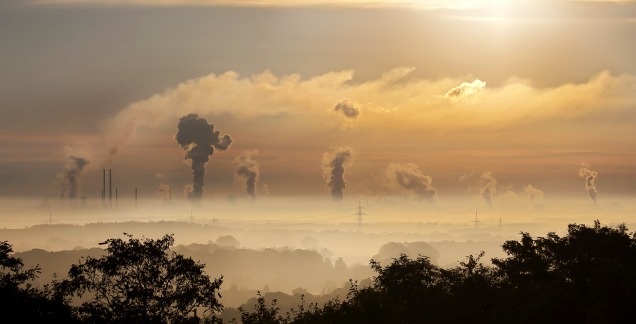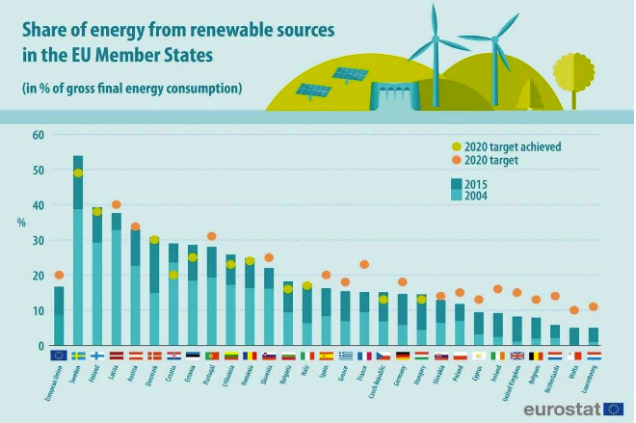 Having spent this summer interning at Equinor*, one of my key takeaways is about the importance of carbon pricing.
Having spent this summer interning at Equinor*, one of my key takeaways is about the importance of carbon pricing.
Prior to joining the Norwegian energy giant, carbon pricing was something I had only ever considered as part of my undergraduate economics degree. However, Equinor is a great example of how effective a carbon tax can be. In 2016, the company’s upstream oil and gas portfolio had a carbon intensity (i.e. the amount of carbon emitted per barrel produced) of 10kg of CO₂ per barrel of oil equivalent, compared to an industry average of 17kg. Equinor is aiming to reduce this to 9kg by 2020 and 8kg by 2030. Both targets look within reach.
In large part, Equinor’s high carbon efficiency is driven by the carbon tax that has been in place in Norway since 1991. According to the OECD’s Effective Carbon Rates 2016 publication, in 2012, in Norway, 38% of carbon emissions are subject to a price at or above EUR 30 per tonne of CO₂, 81% are subject to a price at or above EUR 5 per tonne of CO₂ and only 19% of carbon emissions are subject to no price at all. This compares to only 10% of emissions across all other countries being subject to a price at or above EUR 30 per tonne, 30% of emissions being subject to a price at or above EUR 5 per tonne and a massive 60% of emissions not being subject to any price at all. The highest carbon tax in Norway is EUR 56.
So what does carbon pricing mean and how does it actually work? Putting a price on carbon means putting a cost on the emission of carbon dioxide (and other greenhouse gases). This internalises the otherwise external and unpaid for cost of emissions (such as the cost of climate change) and puts the responsibility back on the emitter to either reduce emissions or pay for the right to emit. A carbon price creates an economic signal for emitters and enables them to incorporate the price into their financial planning. It encourages them to improve efficiencies and pursue clean technology innovations as the lower their emissions are, the less they are required to pay. Hence, Equinor’s low carbon intensity. It also informs investment decisions, promoting cleaner alternatives.
Carbon pricing can be introduced either in the form of a tax or an emissions trading system (ETS). A carbon tax puts a direct cost on each tonne of greenhouse gas emitted or on the carbon content of fossil fuels. This does not determine how much emissions will be reduced by, but it sets a firm price on carbon. An ETS caps the total permissible emissions within a given area. Low emitters are permitted to sell their carbon credits to higher emitters thereby establishing a market price for carbon. The cap ensures that overall emissions are reduced.
Carbon pricing initiatives are becoming more common and acceptable. In 2018, 20% of global greenhouse gas emissions are covered by carbon pricing initiatives, which have now increased to a total of 51 worldwide. These include:
- The EU introduced the world’s first international carbon trading system in 2005. It remains the world’s biggest carbon market, but it has been plagued since inception by problems of credit over-supply and a poor pricing mechanism. Nevertheless, a post-2020 reform plan has been agreed pursuant to which the cap on aggregate emissions will be lowered at a faster pace. The market surplus is set to fall by more than 1 billion tonnes (more than 60%) between 2019-2023. The allowance price has responded by increasing from 4-5 EUR per tonne of CO2 in April 2017 to a 12-14 EUR per tonne range one year later.
- Countries across Central and South America have embarked on introducing a variety of carbon pricing mechanisms. Argentina adopted a carbon tax of US$ 10 per tonne of CO2 in December 2017, which is expected to cover about 20% of the country’s greenhouse gas emissions. Colombia has introduced a carbon tax on all liquid and gaseous fuels used for combustion. Revenues raised are being earmarked for the Colombia in Peace Fund to support ecosystem protection and coastal erosion management. Chile introduced a carbon tax in January 2017, which is intended to help the country meet its aim of cutting its greenhouse gas emissions by 20% below 2007 levels by 2020. In 2017, Mexico launched a year-long ETS simulation. On the back of this experience, it has now started a pilot ETS which is expected to be formally launched in 2022.
- Countries in Asia are also looking into carbon pricing, most notably China, which launched a national ETS in December 2017. Once fully operational, this ETS is expected to be the largest in the world.
One notable exception to the general trend of adopting carbon pricing is the US. Last month, Carlos Curbelo, the Republican member of the House of Representatives proposed a bill to introduce a carbon tax of US$ 24 per tonne of CO2 to be levied on coal mines, refineries, gas processing plants and other industrial facilities. Revenues raised would be used to abolish a federal tax on petrol, invest in roads and bridges and smaller amounts would go towards grants for low-income families, flood protections and research into energy innovation. However, it looks very unlikely that Mr Curbelo’s bill will ever be adopted in law as the same week the House passed a resolution arguing that “a carbon tax would be detrimental to American families and businesses, and is not in the best interest of the United States”. Nevertheless, even if the US federal government does not seem in favour, individual states, including California, Washington and Massachusetts, have either introduced or scheduled the introduction of an ETS. This indicates that, just as the “We Are Still In” coalition in response to President’s Trump decision to withdraw from the Paris Agreement, action at the sub-national level in the US may yet introduce countrywide carbon pricing through the back door.
The final piece of the puzzle is the private sector. In recent years, internal carbon pricing has emerged as an effective mechanism to help companies manage the risks and evaluate the opportunities of embarking on the transition to low carbon. In 2017, 1300 companies disclosed that they currently use an internal price of carbon or intend to do so within two years. This includes over 100 Fortune Global 500 companies with combined annual revenues of approximately US$ 7 trillion. Incidentally, Equinor applies a US$ 50 internal price of carbon outside of Norway.
Momentum towards the introduction of carbon pricing across the board is clearly building – economists, business and many governments agree that this is an elegant and effective way of reducing emissions and dealing with climate change. However, huge emitters in the Middle East, Russia and India remain outside the fold, together with, of course, the US government. This does not prevent business from leading the way by introducing internal carbon pricing and focussing on investments into cleaner, more efficient solutions, which in turn will make them more profitable in the long-run. Time to take the baton!
 A lot it would seem, if you’re a large oil and gas company repositioning yourself as a low-carbon committed energy company. So, on 15 March,
A lot it would seem, if you’re a large oil and gas company repositioning yourself as a low-carbon committed energy company. So, on 15 March,  2017 was a year when sustainability, climate change and emissions reductions came to the fore on both private and public agendas. And so as we tumble towards 2018, I would like to do a run-down of the year’s developments that are helping to sustain a future.
2017 was a year when sustainability, climate change and emissions reductions came to the fore on both private and public agendas. And so as we tumble towards 2018, I would like to do a run-down of the year’s developments that are helping to sustain a future.
 This weekend your blogger went along to the inaugural
This weekend your blogger went along to the inaugural 

 I have always believed that a clean energy revolution can only be achieved with support and buy-in from the big oil and gas companies. It seems that many such companies are now starting to agree.
I have always believed that a clean energy revolution can only be achieved with support and buy-in from the big oil and gas companies. It seems that many such companies are now starting to agree.
 Big businesses often get lambasted for ignoring their impacts on the environment.
Big businesses often get lambasted for ignoring their impacts on the environment. On 7 June 2017, the UK generated over 50% of its electricity from renewable energy for the first time ever. This follows on from the UK going a full 24 hours without any power generated from coal on 21 April 2017. These are landmark moments indeed! However, the UK still has a long way to go in renewables as it is lagging behind most international benchmarks. In 2015, only 8.2% of UK energy was generated from renewable sources. Furthermore, the UK now has plans to scrap its target of reaching 15% renewable energy generation by 2020 as part of Brexit.
On 7 June 2017, the UK generated over 50% of its electricity from renewable energy for the first time ever. This follows on from the UK going a full 24 hours without any power generated from coal on 21 April 2017. These are landmark moments indeed! However, the UK still has a long way to go in renewables as it is lagging behind most international benchmarks. In 2015, only 8.2% of UK energy was generated from renewable sources. Furthermore, the UK now has plans to scrap its target of reaching 15% renewable energy generation by 2020 as part of Brexit.